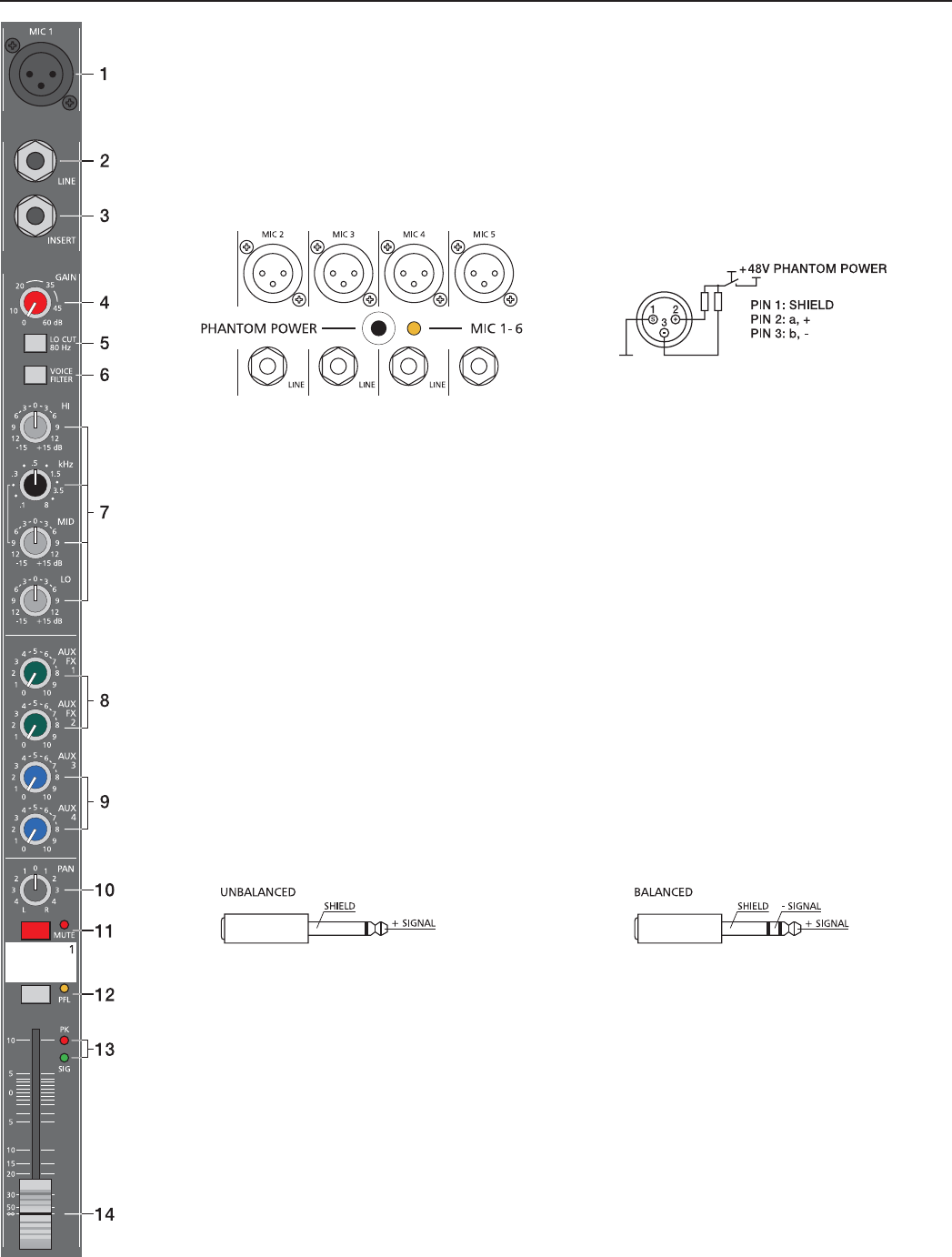
INPUT MONO
1. MIC
Electronically balanced XLR-type inputs for the connection of low impedance microphones like the ones
featured in state-of-the-art studio and live mixing consoles. This type of input stage provides extraordinary
low noise signal conversion at an extremely low distortion rate (typical <0.002%) even in the high frequency
range. Generally, any type of microphone can be connected as long as its pin assignment is in accordance to
the diagram as shown below. When condenser microphones are connected, you have to press the PHANTOM
POWER button, which is located in the input section. The microphone gets its operating voltage (+48) through
the mixer and you can forget about battery replacement times.
CAUTION: Make sure to always connect the microphones before turning on the phantom power or switching
the CMS on with phantom power being activated. This is the only way to prevent your microphones from
being damaged. Also make sure to engage the STANDBY button in the master section to safe yourself and
your environment from nasty power-on noise. Simultaneous connection of condenser type microphones and
dynamic microphone models is generally possible with phantom power being activated. Before you do so,
please consult the manual of the concerned microphone. The MIC input accepts levels between –60dBu …
+21dBu – depending on the setting of the corresponding gain control. Because of their low impedance design
and the possibility of phantom power these XLR-type inputs are mainly suitable for microphone applications.
However, cascading additional mixing consoles or connecting FX units, keyboards or other electronic
equipment is possible as well. Because of improved impedance and level matching using the LINE level inputs
when connecting this kind of equipment is preferable.
2. LINE
Electronically balanced inputs for the connection of electronic instruments, such as keyboards, drum machines,
E-guitars and E-basses with an active output, as well as all other high level signal sources, like additional
mixers, FX units, CD players, etc. The LINE input accepts levels between –40dBu … +41dBu. The connection
of balanced or unbalanced signal sources is established through monaural or stereo phone plugs, assigned
according to the diagram below. If the device that you want to connect has a balanced output stage, the use
of balanced cables with stereo phone plugs is preferable. This type of connection is greatly insensitive to the
induction of external noise or HF interference.
Do not connect signal sources to LINE and MIC inputs at the same time. The signals would interfere with each
other, resulting in level reduction.
Note: Please, do not connect E-guitars or E-basses with passive, high impedance outputs directly to a LINE
input. These inputs, like Line level inputs of mixers from other manufacturers, are meant for the connection of
the relatively low source impedance of electronic instruments. The reproduction of the instrument’s original
sound characteristics will be unsatisfactory. Connect those instruments using a special transformer or pre-
amplifi er with very high input impedance. Musical instruments with an active electronic output (battery-powered)
can be connected without second thoughts.
When connecting signal sources, please make sure to set the corresponding channel faders or at least
the two master faders to their minimum positions or engage the STANDBY button. This will save you,
your audience, and the equipment from extensive wear from unpleasant pops.
5


















